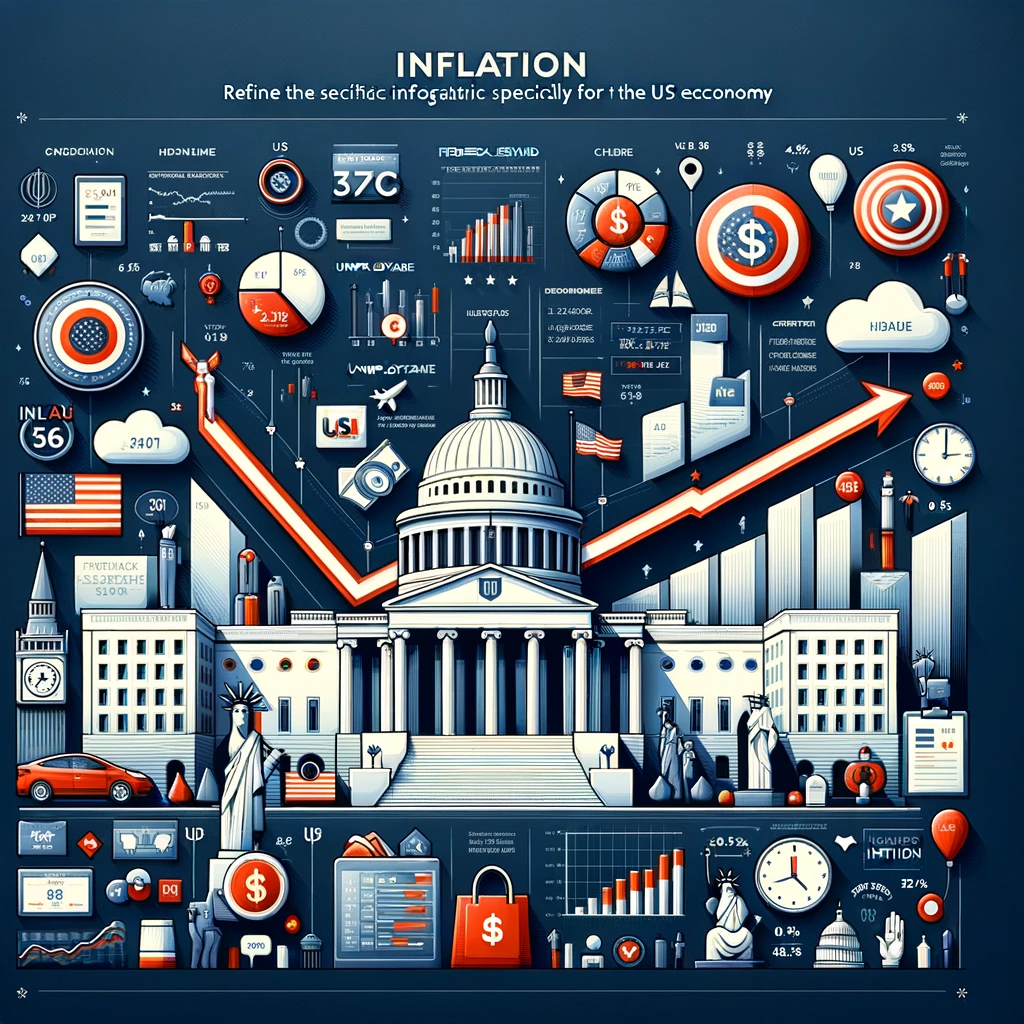Assessing U.S. Inflation Trends: Examining Data and Expectations for March 2023
2023-03-06

U.S. Inflation Trends: CPI Shows 6.6% Increase in January 2023, Reflecting Downward Trend from 9.0% Peak in June 2022
The latest data from the U.S. Bureau of Labor Statistics shows that the Consumer Price Index (CPI) for All Urban Consumers All Items in U.S. City Average increased by 6.6% year-over-year in January 2023, down from 7.0% in November 2022 and continuing a downward trend from the peak of 9.0% in June 2022. These numbers still reflect a significant increase compared to the average year-over-year changes in previous years, which were 2.4% in 2018, 1.8% in 2019, 1.2% in 2020, and 4.7% in 2021. The recent peak in mid-2022 was likely influenced by various factors, including the post-pandemic demand surge, supply chain disruptions, and energy prices. The subsequent decline may indicate a gradual stabilization of inflationary pressures, although the current level of 6.6% remains well above the pre-pandemic levels. It will be crucial to monitor whether this downward trend continues in the coming months and how it aligns with broader economic conditions, particularly in regard to monetary policy decisions and consumer purchasing power. The overall upward trend in the CPI over the past year has been influenced by a combination of factors, including increased consumer demand, supply chain disruptions, labor shortages, and rising energy prices. These factors have contributed to higher costs for goods and services, impacting households and businesses. Furthermore, the potential spillover effects of inflation into wages and future pricing behavior remain a point of concern. As the Federal Reserve seeks to navigate these developments in pursuit of its dual mandate of maximum employment and stable prices, the evolving inflation dynamics will undoubtedly shape the economic landscape in the months ahead. It's crucial for policymakers, businesses, and individuals to stay attuned to these trends and adjust their strategies as necessary.
Significant Fluctuations in Sticky Price Consumer Price Index: Year-over-Year Change Drops to 64.6% in January 2023
The Sticky Price Consumer Price Index, which tracks goods and services with infrequently changing prices, has shown significant fluctuations in recent months. In January 2023, the year-over-year change stood at 64.6%, a considerable decrease from the previous month's 88.9%. This decline is part of a broader trend, as the index peaked in February 2022 at 186.2% and has since been on a downward trajectory. These figures starkly contrast with the average year-over-year changes in previous years, notably the unprecedented surge in 2022, jumping from 17.3% in 2021 to 130.2% in 2022. The recent decrease may signal a potential slowdown in inflation, which aligns with the Federal Reserve's efforts to curb rising prices. However, it's essential to remain vigilant as fluctuations in the index's trend could have broader implications for U.S. inflation. The data provides a clear indication that the economy has been experiencing a period of volatile inflation, and close monitoring of the index will be crucial in informing future economic decision-making.
University of Michigan Inflation Expectation Shows Declining Trend from 2022 to 2023
The latest monthly data on the University of Michigan's Inflation Expectation (median expected price change next 12 months, Surveys of Consumers) shows a noticeable trend. In March 2022, the inflation expectation stood at 5.4%, maintaining this level in April 2022. However, in May 2022, a slight dip to 5.3% was observed, followed by a further decrease to 5.2% in July 2022. The trend continued as the inflation expectation dropped to 4.8% in August, reaching 4.4% by December 2022. This decline persisted, hitting 3.9% in January 2023, before experiencing a modest uptick to 4.1% in February 2023. These fluctuations indicate a clear shift in consumer sentiment regarding future price changes. The deviation from the consistently high levels seen in early 2022 suggests a potential shift towards lower inflation expectations. If sustained, this trend could signal a potential easing of inflationary pressures in the U.S. economy, which could have implications for monetary policy decisions and consumer behavior. It's essential to continue monitoring these expectations to gauge their impact on the broader economic landscape.
February 2024 Breakeven Inflation Rate Data from Federal Reserve Bank of St. Louis
The latest monthly data on the Breakeven Inflation Rate, sourced from the Federal Reserve Bank of St. Louis, reveals the following figures for February 2024: the 5-Year breakeven inflation rate stands at 2.35%, the 10-Year at 2.3%, and the 30-Year at 2.29%. These rates represent the market's expectation of inflation, calculated from the difference in yields between Treasury Constant Maturity Securities and Treasury Inflation-Indexed Constant Maturity Securities. The data indicates a relatively moderate expectation of inflation across these time horizons. It's essential to monitor these figures closely, as they provide valuable insights into market sentiment and expectations related to future inflation.
February 2023 Expected Inflation Rates from Federal Reserve Bank of Cleveland
The latest monthly data on expected inflation, as reported by the Federal Reserve Bank of Cleveland for February 2023, indicates the following estimated rates: 2.61% for the 1-Year expected inflation, 2.36% for the 2-Year, 2.13% for the 5-Year, and 2.09% for the 10-Year. These figures provide critical insights into the market's long-term inflation expectations and can have significant implications for monetary policy decisions, investment strategies, and overall economic outlook. It's worth noting that the methodology employed by the Federal Reserve Bank of Cleveland in estimating expected inflation is comprehensive, incorporating various data sources such as Treasury yields, inflation data, inflation swaps, and survey-based measures of inflation expectations, ensuring a robust and multi-faceted approach to capturing inflation expectations. This data serves as a vital input for businesses, policymakers, and investors in navigating the complex landscape of inflation risk and economic planning.
